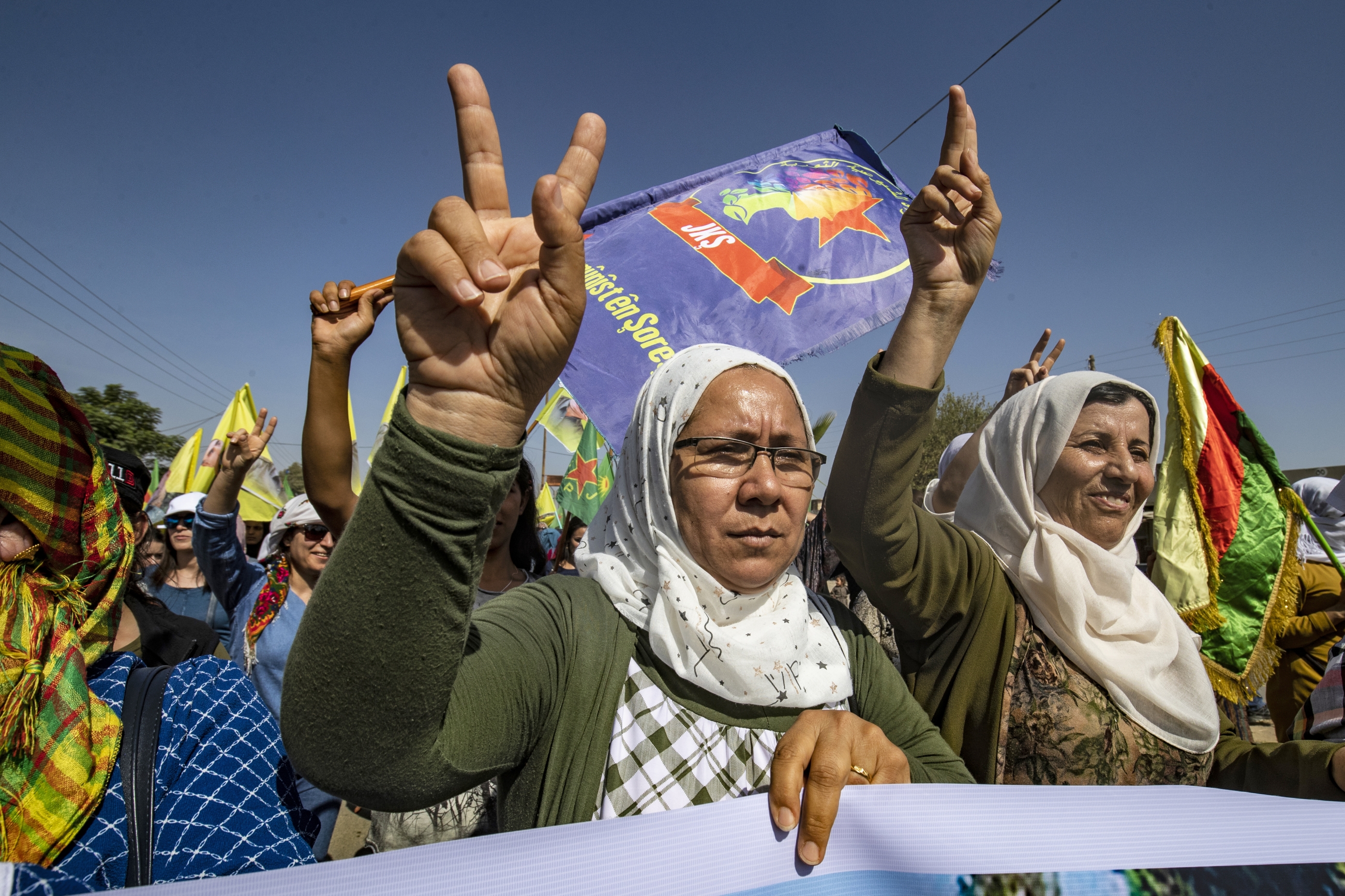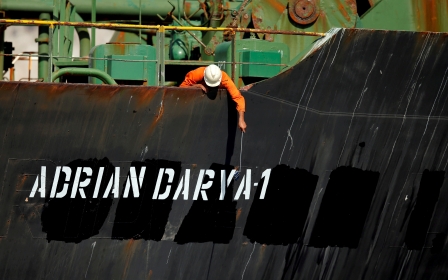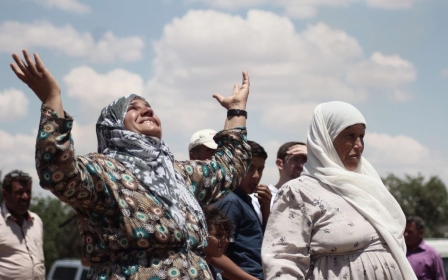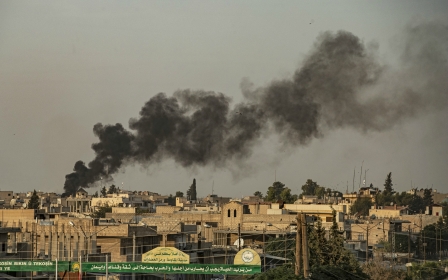Why is Turkey invading northeast Syria?

Turkey has launched its latest operation in northern Syria, Operation Spring of Peace, targeting the Kurdish Democratic Union Party (PYD) and its military wing, the Peoples Protection Units (YPG).
The move, which was preceded by a promise by US President Donald Trump to withdraw US troops from the area, has provoked outrage from some observers who fear a massacre being carried out against Kurds in northern Syria.
Turkey, however, maintains that it needs to prevent the creation of a "terror corridor" along its southern border.
The roots of this latest chapter in the Syrian war goes back decades, however, and the situation on the ground - not least when it comes to the myriad of acronyms involved - has become increasingly complex:
Who is fighting who?
New MEE newsletter: Jerusalem Dispatch
Sign up to get the latest insights and analysis on Israel-Palestine, alongside Turkey Unpacked and other MEE newsletters
Democratic Union Party (PYD)/Peoples Protection Units (YPG)
The PYD was founded in 2003 in Syria, and following the beginning of the Syrian civil war in 2011, the group managed to take control of much of the country's north in the security vacuum that followed. The group claims to espouse an ideology called "Democratic Confederalism", based on the ideology of Kurdistan Workers Party (PKK) founder and leader Abdullah Ocalan, who has been in prison in Turkey since 1999.
Since 1984, the PKK militant group has been engaged in a guerilla conflict with the Turkish state, originally calling for the creation of an independent socialist Kurdish state but later modifying to instead call for autonomy and regional federalism.
The PYD says it is independent of the PKK, but others have suggested that many of its operations are controlled by the militant group's leadership in the Qandil mountains in northern Iraq.
The longstanding aim of the PYD has been to link a number of "cantons" controlled by the group across northern Syria and the group has espoused decentralised democracy, feminism and eco-socialism as part of its ideology. Although the group is seen as Kurdish nationalist, the PYD itself denies it has an ethnic basis.
In addition, there are a number of allied groups fighting alongside them:
-
Syrian Democratic Forces - a coalition formed with US assistance in 2015 with Arab and Turkmen and other ethnic groups in northern Syria, the group has been a key fighter against the Islamic State (IS) group.
-
Marxist Leninist Communist Party - a far-left armed Turkish group that is illegal in Turkey, the MLKP have fought against IS alongside the YPG since 2012.
-
International Freedom Battalions - an international volunteer organisation made up of foreign fighters, loosely modelled on the International Brigades who volunteered to fight during the Spanish Civil War.
Turkey
The second-largest army in NATO, Turkey has viewed the growth of the PYD with deep concern since at least 2014 when world attention was drawn to the group over its conflict with IS in the town of Kobane.
A peace process that had been ongoing between Turkey and the PKK since 2013 collapsed in 2015 in part over the spread of the PYD. Since then, Erdogan has repeated his determination that he would "never allow the establishment of a Kurdish state in northern Syria".
In 2016, Operation Euphrates Shield was launched with the intent of targeting IS in northern Syria and then Operation Olive Branch in 2018 saw the YPG driven out of the northwestern region of Afrin. Tension has built since then towards a full-blown conflict to eliminate the YPG presence in the rest of the north.
Fighting along Turkey are a number of Syrian rebel groups, including:
-
Syrian National Army - composed of fighters aligned with the Free Syrian Army, the group has aided in Turkish operations in Afrin, al-Bab and other areas.
What does Turkey want in northern Syria?
Turkey fears that a pro-PKK entity on its southern border would inevitably become a launchpad for attacks on Turkey and, therefore, sees it as an existential threat. More than 40,000 people were killed in fighting between Turkey and the PKK up to 2014.
The other reason for the operation is a desire to expel Syrian refugees from Turkey and resettle them in a "safe zone" it plans to create in northern Syria. Turkey has the largest refugee population in the world and the presence of Syrians in the country has increasingly led to animosity from Turks who blame them for crime, unemployment and the dilution of Turkish culture.
In order to counter the rising xenophobia, Erdogan has promised to relocate two million Syrians in areas captured from the YPG, even if they do not originate from there.
What does the PYD want in northern Syria?
The PYD's long-stated aim has been the creation of a decentralised statelet on the basis of Ocalan's ideology. The area controlled by the PYD - referred to by many as Rojava, the Kurdish word for the region - has established autonomy with networks of local councils and forums that aim to promote decentralised democracy (though others question how much power they actually hold). The PYD has also been accused of enforcing a one-party rule in the Autonomous Administration that runs Rojava.
The original aim of creating a contiguous entity has been seemingly dashed by the Turkish invasion of Afrin. Now the PYD appears to be aiming to maintain influence in any future peace process in Syria, although attempts to involve themselves in UN-backed processes have been vetoed by Turkey.
Kurds, in particular, have long faced discrimination in Syria, with successive governments attempting to "Arabise" Kurdish regions and change demographics. The PYD wants Kurdish rights protected in a future constitutional settlement.
What does the US-led coalition want in northern Syria?
President Donald Trump was elected on a platform of isolationism and a promise to withdraw the US from conflicts that did not concern it. The defeat of IS has repeatedly been touted as the sole reason for US involvement in Syria (as well as occasionally challenging Iran); and now that this has largely taken place, Trump has argued the United States has no need to remain.
The biggest fear for the US and its allies is that Turkey's takeover of PYD-controlled areas could see the release of some of the 15,000 IS fighters previously captured by the Kurds and their allies.
Trump has warned that if there is any "unforced or unnecessary fighting", he would crush the Turkish economy.
What do the Syrian government (and its allies) want?
The Syrian government, as well as its close allies Iran and Russia, are happy about the US' decision to withdraw from the north but have expressed concern about the violation of Syria's sovereignty by Turkey.
Syrian President Bashar al-Assad hopes that when faced with the threat from Turkey, the PYD will throw their lot in with him in order to avoid total defeat.
Assad has repeatedly said he aims to regain control of all of Syria, and if the PYD was to ally with him formally, it would bring the largest area hitherto out of his control back under Damascus' influence.
This article is available in French on Middle East Eye French edition.
Middle East Eye delivers independent and unrivalled coverage and analysis of the Middle East, North Africa and beyond. To learn more about republishing this content and the associated fees, please fill out this form. More about MEE can be found here.




